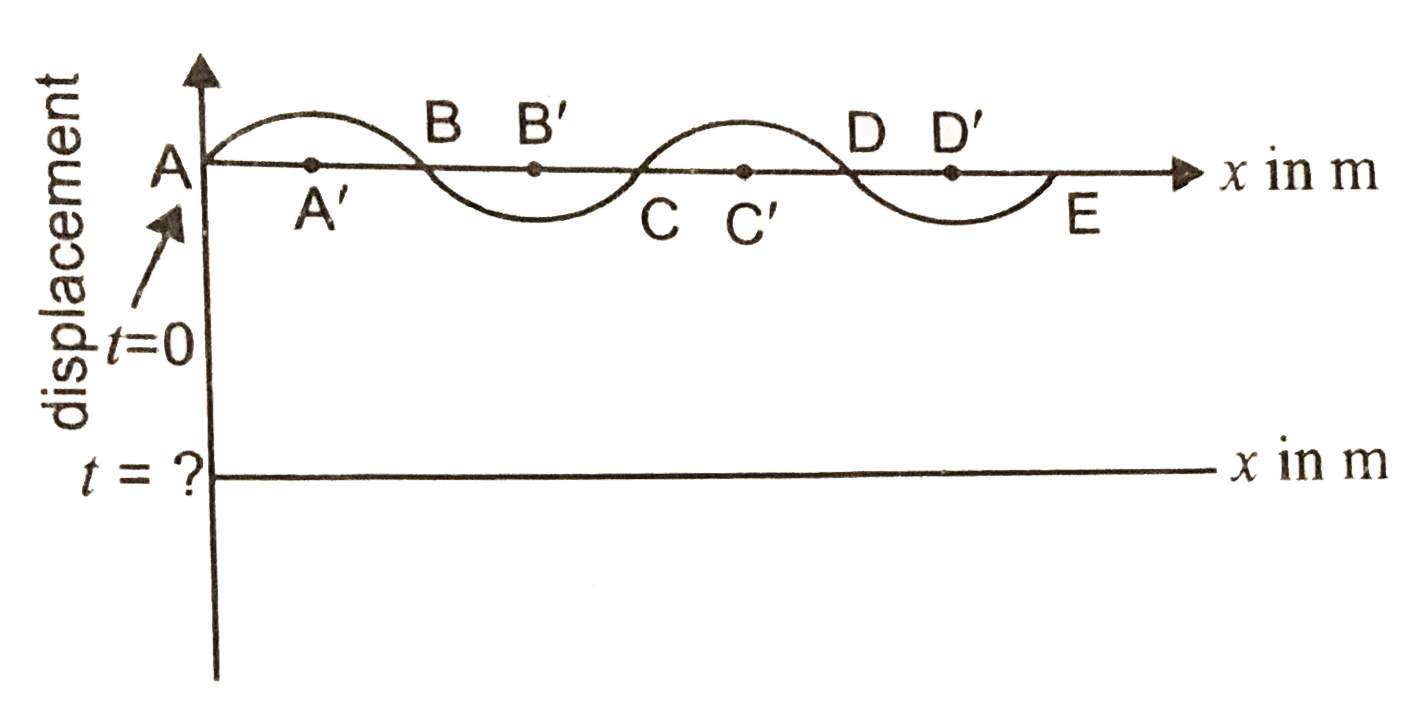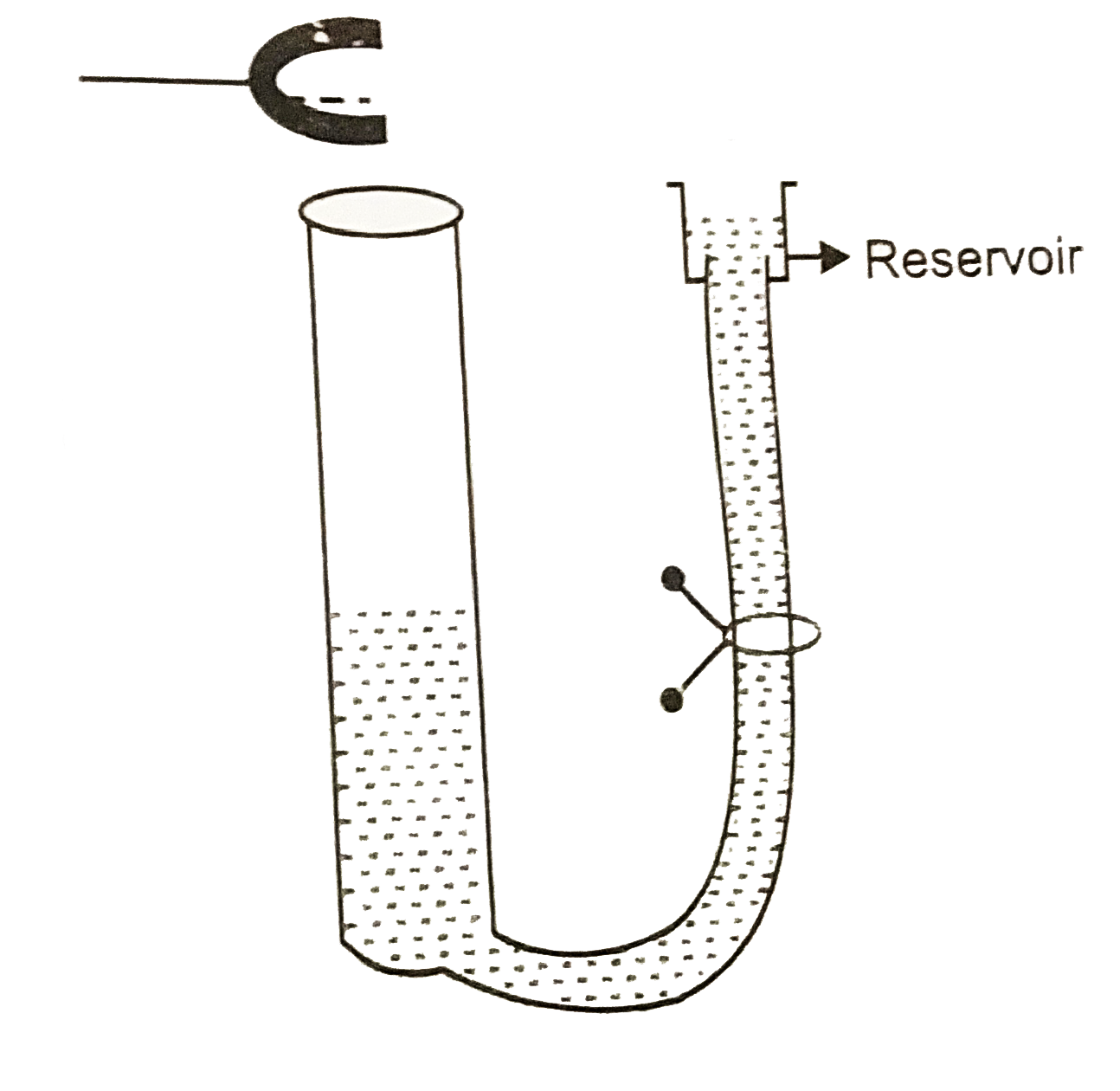NCERT EXEMPLAR PROBLEMS from MODERN PUBLISHERS PHYSICS (HINGLISH) WAVES for Class 11
| Class 11 | PHYSICS |
| Chapter | WAVES |
| MODERN PUBLISHERS PHYSICS (HINGLISH) | NCERT EXEMPLAR PROBLEMS |
| Medium | English |
| Academic Year | 2023-2024 |
Question 5
You have learnt that a travelling wave in a dimension is represented by a funcation y=f(x,t) where x and t must appear in the combination x−vt or x+vt, i.e y=f(x±υt). Is the coverse true? (Examine if the following funcations for y can possibly represent a travelling wave :
(a) (x−vt)2
(b) log[(x+v)/x0]
(c) 1/(x+v) View SolutionQuestion 8
A transverse harmonic wave on a strin is decribed by
y(x,t)=3.0sin(36t+0.018x+π/4)
Where x and y are in cm and t in s. The positive direction of x is from left to right.
(a) Is this a travelling wave or a stationary wave ?
If it is travelling, what are the speed and direction of its propagation ?
(b) What are its amplitude and frequency ?
(c) What is the initial phase at the starting point ?
What is the least distance between two successive crests in the wave ?View SolutionQuestion 11
The transverse displacement of a string (clamped at its two ends ) is given by
y(x,t)=0.06sin(2π3)xcos(120πt)
wherer x ,y are in m and t ini s. The length of the string is 1.5m and its mass is 3×10−2 kg. Answer the following: (i) Does the function represent a travelling or a stationary wave ?
(ii) Interpret the wave as a superimposition of two waves travelling in opposite directions. What are the wavelength, frequency and speed of propagation of each wave ?
(iii) Determing the tension in the string. View SolutionQuestion 12
(i) The transverse displacement of a string (clamped at its two ends ) is given by y(x,t)=0.06sin[2π3x]cos120πt,
where x, y are in m and t is in s.
Do all the points on the string oscillate with the same (a) frequency, (b) phase, (c) amplitude ? Explain your answers. (ii) What is the amplitude of a point 0.375m away from one end? View SolutionQuestion 13
Given below are some functions of x and t to represent the displacement (transverse or longitudinal) of an elastic wave. State which of these represent (i) a travelling wave, (ii) a stationary wave or (iii) none at all?
(a) y=2cos(3x)sin(10t) (b) y=2√x−vt
(c) y=3sin(5x−0.5t)+4cos(5x−0.5t) (d) y=cosxsint+cos2xsin2t View SolutionQuestion 14
A wire stretched between two rigid supports vibrates in its fundamental mode with a frequency of 45Hz. The mass of the wire is 3.5×10−2kg and its linear mass density is 4.0×10−2kgm−1. What is (a) the speed of a transverse wave on the string , and (b) the tension in the string?View SolutionQuestion 15
A metre-long tube open at one end, with a movable piston at the other end, shows resonance with a fixed frequency source (a tuning fork of frequency 340Hz ) when the tube length is 25.5cm or 79.3cm. Estimate the speed of sound in air at the temperature of the experiment. The edge effects amy be neglected. View SolutionQuestion 18
Two sitar strings A and B playing the note 'Ga' are slightly out of tune and produce beats of frequency 6 Hz. The tension in the string A is slightly reduced and the beat frequency is found to reduce to 3 Hz. If the original frequency of A is 324 Hz, what is the frequency of B?View SolutionQuestion 19
Explain why (or how) : (a) In a sound wave, a displacement node is a pressure antinode and vice-versa,
(b) Bats can ascertain distances, directions, nature and size of obstacles without any eyes,
(c) a violin note and sitar note may have the same frequency, yet we can distinguish between the two notes, (d) Solids can support both longitudinal and transverse waves, but only longitudinal waves can propagate in gases,
(e) The shape of pulse gets distorted during propagation in a dispersive medium. View SolutionQuestion 20
A train, standing at the outer signal of a railway station blows a whistle of frequency 400Hz in still air. (i) What is the frequency of the whistle for a platform observer when the train (a) approaches the platform with a speed of 10ms−1 , (b) receeds from the platform with a speed of 10ms−1? (ii) What is the speed of sound in each case ? The speed of sound in still air can be taken as 340ms−1View SolutionQuestion 21
A train, standing in a stationyard, blows a whistle of frequency 400Hz in still air. The wind starts blowing in the direction from the yard to the station at a speed of 10ms−1. What are the frequency, wavelength, and speed of sound for an observer standing on the station's platform ? Is the situation exactly identical to the case when the air is still and the observer runs towards the yard at a speed of 10ms−1 ? Th speed of sound in still air can be taken as 340ms−1. View SolutionQuestion 22
A travelling harmonic wave on a string is described by y(x,t)=7.5sin(0.0050x+12t+π/4) (a) what are the displacement and velocity of oscillation of a point at x=1cm, and t=1s ? Is this velocity equal to the velocity of wave propagation ?
(b) Locate the point of the string which have the same transverse displacement and velocity as x=1cm point at t=2s,5sand 11s. View SolutionQuestion 23
A narrow sound pulse (for example, a short pip by a whistle) is sent across a medium. (a) Does the pulse have a definite (i) wavelength, (ii) frequency, (iii) speed of propagation ? (b) If the pulse rate is 1 after every 20s, (i.e. the whistle is blown for a split second after every 20s) is the frequency of the note produced by the whistle equal to 120=0.05Hz ?View SolutionQuestion 24
One end of a long string of linear mass dnesity 8.0×10−3kgm−1 is connected to an electrically driven tuning fork of frequency 256 Hz. The other end passes over a pulley and is tied to a pan containing a mass of 90 kg. The pulley end absorbs all the incoming energy so that reflected waves at this end have negligible amplitude. At t=0 the left end (fork end) of the string x=0 has zero transverse displacement (y=0) and is moving along positive y-direction. The amplitude of the wave is 5.0 cm. Write down the transverse displacement y as function of x and t that describest the wave on the string. View SolutionQuestion 26
Earthquakes generate sound waves inside the earth. Unlike a gas, the earth can experience both transverse (S) and longitudinal (P) sound waves. Typically, the speed of S wave is about 4.0 km s−1, and that of P wave is 8.0 kms−1. A seismograph records P and S waved from an earthquake. The first P wave arrives 4 min before the first S wave. Assuming the waves travel in straight line, how far away does the earthquake occur?View SolutionQuestion 27
A bat is flitting about in a cave, navigating via ultrasonic beeps. Assume that the sound emission frequency of the bat is 40kHz. During one fast swoop directly toward a flat wall surface. The bat is moving at 0.03 times the speed of sound in air. What frequency does the bat hear reflected off the wall ?View SolutionQuestion 37
A train whistling at constant frequency is moving towards a station at a constant speed V. The train goes past a stationary observer on the station. The frequency n′ of the sound as heard by the observer is plotted as a function of time t, figure. Identify the expected curve.View SolutionQuestion 54
A train standing at the outer signal of a railway station blows a whistle of frequency 400Hz in still air. The train begins to move with a speed of 10ms−1 towards the platform. What is the frequency of the sound for an observer standing on the platform ? (sound velocity in air =330ms−1) View SolutionQuestion 56
The pattern of standing waves formed on a stretched strinig at two instants of time are shown in figure. The velocity of two waves superimposing to form stationary wave is 360ms−1 and their frequencies are 256 Hz.
(a) Calculate the time at which the second curve is plotted. ltbr> (b) Mark nodes and antinodes on the curve.
(c) Calculate the distance between A′ and C′.
 View Solution
View SolutionQuestion 57
A tuning fork vibrating with a frequency of 512 Hz is kept close to the open end of a tube filled with water , figure. The water level in the tube is gradually lowerd. When the water level is 17cm below the open end, maximum intensity of sound in heard. If the room temperature is 20∘C, calculate
(a) speed of sound in air at room temperature.
(b) speed of sound in air at 0∘C
(c) if the water in the tube is replaced with mercury, will there be any difference in your observations?
 View Solution
View Solution
All Exercises from MODERN PUBLISHERS PHYSICS (HINGLISH) Class 11 PHYSICS WAVES
- PRACTICE PROBLEMS
- CONCEPTUAL QUESTIONS
- NCERT ADDITIONAL EXERCISES
- NCERT EXEMPLAR PROBLEMS
- NCERT TEXTBOOK EXERCISES
- HIGH ORDER THINKING SKILLS & ADVANCED LEVEL
- REVISION EXERCISES
- ASSERTION REASON TYPE QUESTIONS
- INTEGER TYPE QUESTION
- MATCHING TYPE QUESTIONS
- MATRIX MATCH TYPE QUESTIONS
- MULTIPLE CHOICE QUESTIONS
- CHAPTER PRACTICE TEST
- EXAMPLE
- PROBLEM
